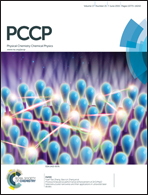Neural network iterative diagonalization method to solve eigenvalue problems in quantum mechanics
Abstract
We propose a multi-layer feed-forward neural network iterative diagonalization method (NNiDM) to compute some eigenvalues and eigenvectors of large sparse complex symmetric or Hermitian matrices. The NNiDM algorithm is developed by using the complex (or real) guided spectral transform Lanczos (cGSTL) method, thick restart technique, and multi-layered basis contraction scheme. Artificial neurons (or nodes) are defined by a set of formally orthogonal Lanczos polynomials, where the biases and weights are dynamically determined through a series of cGSTL iterations and small matrix diagonalizations. The algorithm starts with one random vector. The last output layer produces wanted eigenvalues and eigenvectors near a given reference value via a linear transform diagonalization approach. Since the algorithm uses the spectral transform technique, it is capable of computing interior eigenstates in dense spectrum regions. The general NNiDM algorithm is applied for calculating energies, widths, and wavefunctions of two typical molecules HO2 and CH4 as examples.


 Please wait while we load your content...
Please wait while we load your content...